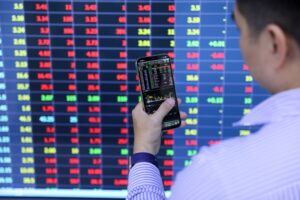To form an investment method for newbies to the stock market is very important. It is like when entering the forest, you must carry a compass or a map, without any of which will be difficult to determine the direction to reach the destination. In stocks, that goal is profit.
Everyone has a different style and level of risk tolerance, so investment methods will also be different, as long as they all solve the problem of maximizing profits and minimizing risks.
Before 2010, fundamental analysis was the most commonly used method on the Vietnamese stock market. This method helps investors choose good stocks through appropriate valuation, and at the same time assess the growth potential of the stock in the future.
Fundamental analysis is performed based on data from financial statements, business news, statistics or industry outlook predictions. Investors base on this information to enter the market (ie buy) when the enterprise’s assets are below their true value.
Fundamental analysis is suitable for investors to establish long-term portfolios. Therefore, its biggest disadvantage is that it cannot help investors control short-term risks and indicate specific action strategies.

After 2010, technical analysis became more popular. This is a method commonly used by investment funds to map out short and medium-term strategies, in line with market movements and to control risks for the portfolio.
Technical analysis is a method based on price and liquidity charts to analyze supply and demand fluctuations, thereby determining when to buy, sell or hold stocks. The terms commonly used when implementing this strategy are trend, support, resistance, and price pattern.
Technical analysis offsets the disadvantages of fundamental analysis because investors can easily devise a trading strategy and control the risk from price fluctuations. In return, the downside is not recognizing good stocks or growth stocks. Therefore, technical analysis is more suitable for those who have a high risk appetite and prefer day trading instead of holding for the long term.
Today, investors often apply quantitative methods to compensate for the shortcomings of fundamental analysis and technical analysis. Investment decisions are often based on fundamental analysis, but the determination of entry and exit points is based on technical analysis.
The advantage of the quantitative method is that it gives a relatively objective signal, based on mathematical models with the assumption that the relationship between factors formed in the past will repeat in the future. Signals to buy and sell based on these analyzes should minimize errors due to human factors.
Because the data of the Vietnamese stock market is not much, especially the liquidity has only improved since 2012, so the quantitative method is more effective than the application of artificial intelligence to process big data (BigData). However, the quantitative method also needs to regularly check and optimize the parameters.
To clearly form an investment method that suits, investors need to equip themselves with basic knowledge and experience that accumulates over time. If investors want to take advantage of market waves, especially in the 2020-2025 cycle of attracting FDI, investors can refer to investment consulting tools provided at securities companies or financial data providers.






